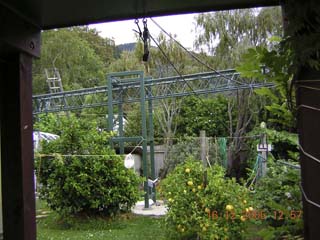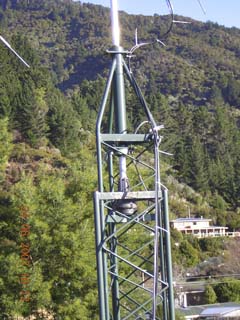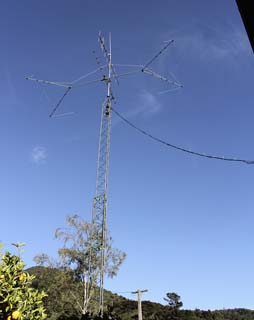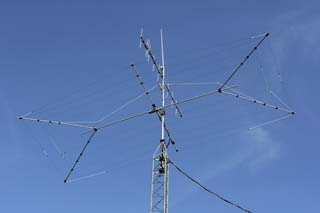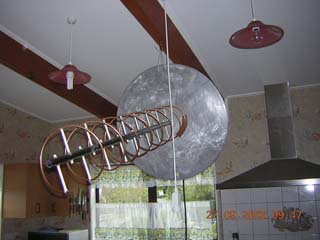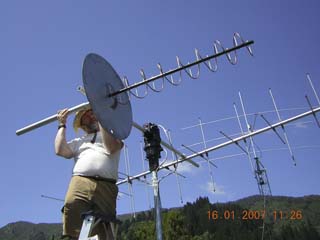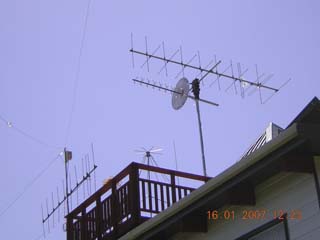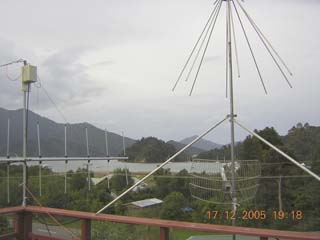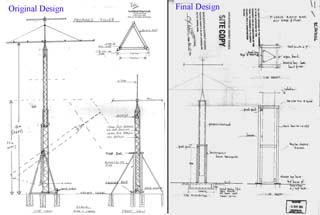
Burleigh Engineering in Blenheim adapted Rob Smith's (ZL4AP) original design of the tower (left) and made the tower shown on the right. It is telescopic and tilt-over and is supported by a shaft and two bearings taken from a large portable saw bench for cutting logs. The antenna can be raised up to 16 metres. Enlarge
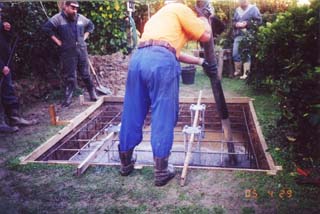
The foundation consists of a slab of concrete with a cage of reinforced iron and measures 2.4 x 2.4 x 0.6 metres and weights 8.3 tonne. This photo shows the concrete being poured using an overhead pumping system. Enlarge
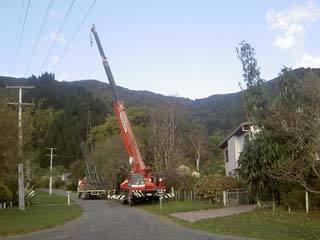
This photo shows a crane about to lift the tower into position over the top of the two storey house. Enlarge
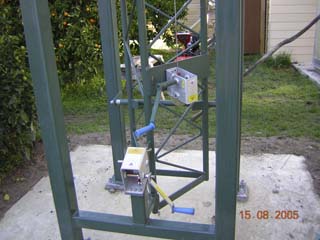
Two 'boat winches' are used to lift and tilt over the tower using stainless steel wire cable. Enlarge
